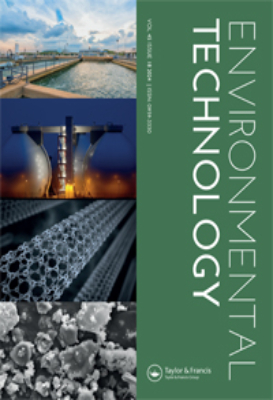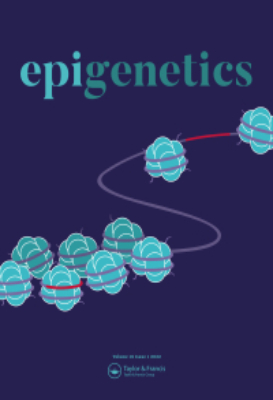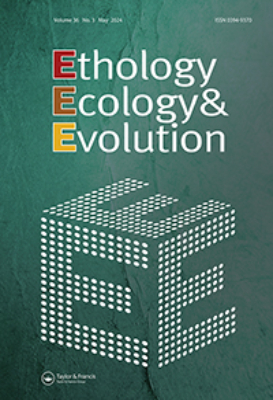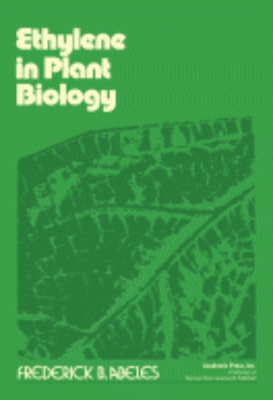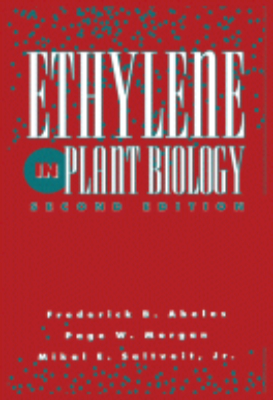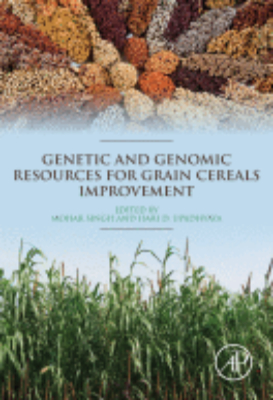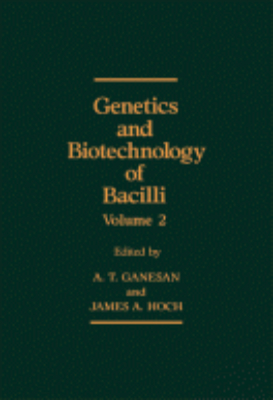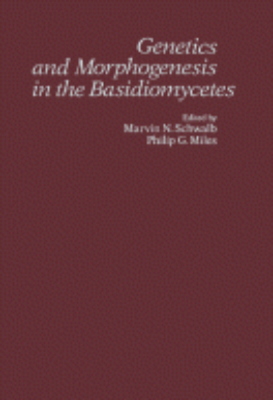Life Science
Epigenetics and Dermatology
Epigenetics and Dermatology explores the role of epigenetics in the pathogenesis of autoimmune-related skin diseases and skin cancer. Leading contributors cover common and uncommon skin conditions in which extensive epigenetic research has been done. They explain how environmental exposures (chemicals, drugs, sunlight, diet, stress, smoking, infection, etc.) in all stages of life (from a fetus in-utero to an elderly person) may result in epigenetic changes that lead to development of some skin diseases in life. They also discuss the possibilities of new and emergent epigenetic treatments which are gradually being adopted in management of various skin diseases. Chapters follow a conventional structure, covering fundamental biology of the disease condition, etiology and pathogenesis, diagnosis, commonly available treatments, and epigenetic therapy where applicable.
Epigenetics in Human Disease
Epigenetics is one of the fastest growing fields of sciences, illuminating studies of human diseases by looking beyond genetic make-up and acknowledging that outside factors play a role in gene expression. The goal of this volume is to highlight those diseases or conditions for which we have advanced knowledge of epigenetic factors such as cancer, autoimmune disorders and aging as well as those that are yielding exciting breakthroughs in epigenetics such as diabetes, neurobiological disorders and cardiovascular disease. Where applicable, attempts are made to not only detail the role of epigenetics in the etiology, progression, diagnosis and prognosis of these diseases, but also novel epigenetic approaches to the treatment of these diseases. Chapters are also presented on human imprinting disorders, respiratory diseases, infectious diseases and gynecological and reproductive diseases. Since epigenetics plays a major role in the aging process, advances in the epigenetics of aging are highly relevant to many age-related human diseases. Therefore, this volume closes with chapters on aging epigenetics and breakthroughs that have been made to delay the aging process through epigenetic approaches. With its translational focus, this book will serve as valuable reference for both basic scientists and clinicians alike.
Epigenetics in Psychiatry
Epigenetics in Psychiatry covers all major areas of psychiatry in which extensive epigenetic research has been performed, fully encompassing a diverse and maturing field, including drug addiction, bipolar disorder, epidemiology, cognitive disorders, and the uses of putative epigenetic-based psychotropic drugs. Uniquely, each chapter correlates epigenetics with relevant advances across genomics, transcriptomics, and proteomics. The book acts as a catalyst for further research in this potentially very important and useful area of psychiatry. The elucidation of basic principles of epigenetic biology points to the creation of more optimal and effective therapies for major classes of psychiatric disease. In this regard, epigenetic therapy, the use of drugs to correct epigenetic defects, may help in the pharmacotherapy of patients with these disorders. With time, such advances may eventually point to replacements for psychotropic drugs presently of symptomatic value and low efficacy. Moreover, there is evidence to suggest that other forms of treatment commonly used in the management of psychiatric disorders, like psychotherapy and electroconvulsive therapy, may also act by epigenetic mechanisms.
Ethylene in Plant Biology: 1973
Ethylene in Plant Biology focuses on the role of ethylene in plant physiology and the interrelationship between ethylene, fruit ripening, and respiration. It summarizes the physiology, biochemistry, production, regulation, plant effects, metabolism, and mechanism of action of ethylene. This book presents an introduction to basic chemistry of ethylene and available techniques for its sampling and analysis. Then, it discusses the rate, environmental conditions, and reactions involved in ethylene production. Chapter 4 examines the effects of herbicides and hormones, such as auxin, gibberellins, cytokinins, and abscisic acid, on ethylene production. Meanwhile, the next chapter studies the so-called stress ethylene phenomenon in plants. In particular, this book examines the role of insects, temperature, water, gamma-irradiation, and mechanical and chemical stimuli in stress ethylene. The biochemical aspects of ethylene are covered in the subsequent chapters. These include its role in growth and development of plant, phytogerontological activity, role in ethylene synthesis, respiration, pigmentation, and hormone regulation. Chapter 9 presents the activity of ethylene relative to other hydrocarbon analogs and dose-response relationships for a number of ethylene-mediated processes. The concluding chapters tackle the attachment of ethylene to its site of action, including epinasty, root initiation, intumescence formation, and floral initiation. A discussion on the issue of ethylene air pollution is included. This book will be useful to both undergraduate students and professional workers, especially those who have background in plant anatomy, plant physiology, or biochemistry.
Ethylene in Plant Biology: Second Edition 1992
"Ethylene in Plant Biology, Second Edition provides a definitive survey of what is currently known about this structurally simplest of all plant growth regulators. This volume contains all new material plus a bibliographic guide to the complete literature of this field. Progress in molecular biology and biotechnology as well as biochemistry, plant physiology, development, regulation, and environmental aspects is covered in nine chapters co-authored by three eminent authorities in plant ethylene research. This volume is the modern text reference for all researchers and students of ethylene in plant and agricultural science. Key Features. Completely updated. Concise, readable style for students and professional. Contains an extensive bibliographic guide to the original literature. Well illustrated with diagrams and photographs. Thorough coverage of: ethylene and ethephon roles and effects stress ethylene, biosynthesis of ethylene, molecular biology of ethylene, action of ethylene, agricultural uses of ethylene"
Eukaryotic Cell Genetics
Eukaryotic Cell Genetics reviews the state of knowledge in somatic cell genetics. The book begins by discussing the development of somatic cell genetics, focusing on the estimation of mutation rates in mammalian cells, with frequent reference to the use of drug resistance as a selective character. It then considers some of the specific properties of such variants in order to understand their molecular basis. The subsequent chapters examine the properties of specific types of auxotrophic variants; the means by which eukaryotic cells may be reassembled to give rise to viable cellular composites; gene regulation in eukaryotic organisms; and chromosome mapping. The discussions also include differentiation in cultured cells; neoplastic transformation; the modulation of gene expression in cultured cells; mutation induction in cultured cells; applications of cell culture; and the mechanism of cellular aging. This book is intended for researchers in the fields of genetics and molecular biology, nonspecialists interested in what is happening in a very exciting area of biology, and students at the graduate level in cell biology.
Experimental Pharmacogenetics
Experimental Pharmacogenetics: Physiopathology of Heredity and Pharmacologic Responses reviews heritable factors in animals recognized by the use of drugs and hereditary defects that alter drug responses, including hereditary aspects of the response to drugs in mice and variety of other animal species. This book focuses on pharmacogenetics, which is the study in animal species of genetically determined variations that are revealed by the effects of drugs. The genetics of bacteria, human geneticists classifying man according to pharmacologic assays, and cytologists observing drugs that influence heredity are also elaborated. This publication is beneficial to pharmacologists and geneticists concerned with physiology, pathology, and biochemistry.
Fearon’s Introduction to Biochemistry
Fearon's Introduction to Biochemistry, Fourth Edition provides information pertinent to the fundamental aspects of biochemistry. This book discusses the elements that occur in biological material and the biological properties of water and aqueous solutions. Organized into two parts encompassing 25 chapters, this edition begins with an overview of the classification, distribution, properties, and importance of the constituents of organisms. This text then examines the variable as well as the invariable elements of the biological aspect of all living organisms. Other chapters consider the most important inorganic biochemical compounds, including water, carbon dioxide, carbamates, carbonates, sulfates, silicates, phosphates, fluorides, and chlorides of the biochemical metals. This book discusses as well the chemical reactions associated with life. The final chapter deals with the inherent property of cells for self-construction, which enables them to grow and to preserve their character. This book is a valuable resource for biochemists, biologists, scientists, and research workers.
Flow Cytogenetics-key feature
This is the first book to be devoted entirely to the application and development of flow techniques in cytogenetics. It provides comprehensive information on the use of flow cytometry and sorting for chromosome classification and purification. Cytogenetics and molecular biologists will find this book an invaluable reference source.
Fundamentals of Plant Virology
"Fundamentals of Plant Virology is an introductory student text covering all of modern plant virology. The author, Dr. R.E.F. Matthews, has written this coursebook based on his classic and comprehensive Plant Virology, Third Edition. Four introductory chapters review properties of viruses and cells and techniques used in their study. Five chapters are devoted to current knowledge of all major plant viruses and related pathogens. Seven chapters describe biological properties such as transmission, host response, disease, ecology, control, classification, and evolution of plant viruses. A historical and future overview concludes the text. Fundamentals of Plant Virology is a carefully designed instructional format for a plant virology course. It is also an invaluable resource for students of plant pathology and plant molecular biology. Key Features. Summarizes knowledge on all aspects of plant virology. Condenses all essential material from Plant Virology 3/e. Compares basic properties of cells and viruses. Outlines principles of gene manipulation technology. Discusses serological techniques including monoclonal antibodies. Geared to student level course"
Genetic and Genomic Resources for Grain Cereals Improvement
"Genetic and Genomic Resources For Cereals Improvement is the first book to bring together the latest available genetic resources and genomics to facilitate the identification of specific germplasm, trait mapping, and allele mining that are needed to more effectively develop biotic and abiotic-stress-resistant grains. As grain cereals, including rice, wheat, maize, barley, sorghum, and millets constitute the bulk of global diets, both of vegetarian and non-vegetarian, there is a greater need for further genetic improvement, breeding, and plant genetic resources to secure the future food supply. This book is an invaluable resource for researchers, crop biologists, and students working with crop development and the changes in environmental climate that have had significant impact on crop production. It includes the latest information on tactics that ensure that environmentally robust genes and crops resilient to climate change are identified and preserved. Key Features. Provides a single-volume resource on the global research work on grain cereals genetics and genomics. Presents information for effectively managing and utilizing the genetic resources of this core food supply source. Includes coverage of rice, wheat, maize, barley, sorghum, and pearl, finger and foxtail millets"
Genetic Engineering of Crop Plants
Genetic Engineering of Crop Plants is a proceeding of The 49th Nottingham Easter School in Agricultural Science, which was held at Sutton Bonington on April 17-21, 1989. This symposium discussed progress in the generation of crop species resistant to herbicides, viruses, and insects. The book discusses topics such as the genetic manipulation in plants; genetic engineering of crops for insect and herbicide resistance; the expression of heat shock gene in transgenic plants; and tuber-specific gene expression. The book also covers topics such as regulation of gene expression in transgenic tomato plants; the molecular biology of pea seed development; and the regulatory elements of maize storage protein genes. The text is recommended for experts in the field of botany, agriculture, and genetics who would like to know more about the improvement of crop plants through genetics.
Genetically Modified Plants
"A transgenic organism is a plant, animal, bacterium, or other living organism that has had a foreign gene added to it by means of genetic engineering. Transgenic plants can arise by natural movement of genes between species, by cross-pollination based hybridization between different plant species (which is a common event in flowering plant evolution), or by laboratory manipulations by artificial insertion of genes from another species. Methods used in traditional breeding that generate transgenic plants by non-recombinant methods are widely familiar to professional plant scientists, and serve important roles in securing a sustainable future for agriculture by protecting crops from pest and helping land and water to be used more efficiently. There is worldwide interest in the biosafety issues related to transgenic crops because of issues such as increased pesticide use, increased crop and weed resistance to pesticides, gene flow to related plant species, negative effects on nontarget organisms, and reduced crop and ecosystem diversity. This book is intended to provide the basic information for a wide range of people involved in the release of transgenic crops. These will include scientists and researchers in the initial stage of developing transgenic products, industrialists, and decision makers. It will be of particular interest to plant scientists taking up biotechnological approaches to agricultural improvement for developing nations. Key Features. Discusses traditional and future technology for genetic modification. Compares conventional non-GM approaches and genetic modification. Presents a risk assessment methodology for GM techniques. Details mitigation techniques for human and environmental effects"
Genetics and Biochemistry of Antibiotic Production
* Emphasizes the molecular genetics of antibiotic production * Provides the latest information on the organization of genes encoding the biosynthetic pathway * Explores the mechanisms governing their expression and regulation * Examines the role of resistance genes in protecting organisms from their own lethal productsGenetics and Biochemistry of Antibiotic Production brings together the most up-to-date information on the genetic and biochemical mechanisms involved in antibiotic production. A collection of internationally recognized authors provide the latest information on the organization, function and regulation of genes responsible for antibiotic synthesis in a range of bacteria. This unique book groups antibiotics according to their biosynthetic affiliation, providing a background into evolutionaryrelationships while raising intriguing questions about the raison d'etre of antibiotics in nature.
Genetics and Biotechnology of Bacilli: Volume 1
Genetics and Biotechnology of Bacilli contains the proceedings of the Second International Conference on Genetics and Biotechnology of Bacilli, held at Stanford University in Stanford, California, on July 6-8, 1983. Contributors discuss the progress that has been made concerning the genetics and biotechnology of Bacillus and focus on topics built around the themes of chromosomal organization, secretion, transcription, gene cloning, gene expression, and synthesis of sporulation-associated products. This text is organized into 33 chapters and begins with an overview of bacteriophage lambda biology, with emphasis on lambda insertion, controlled DNA rearrangements, operator-promoter function, and the evolution of extrachromosomal elements. The reader is then introduced to genetic mapping of cloned ribosomal RNA genes, gene amplification in Bacillus subtilis, beta-lactamases of Bacilli, and the role of a Bacillus secretion vector in the secretion of foreign gene products. This book also gives an account of various facets of Bacillus biology, especially in the identification of promoters, cloning of foreign genes, and selection of expressed gene products. This reference material is a valuable resource for geneticists, microbiologists, and biotechnologists, as well as students and researchers in the fields of molecular biology and biochemistry.
Genetics and Biotechnology of Bacilli: Volume 2
Genetics and Biotechnology of Bacilli, Volume 2 is a collection of papers from the "Fourth International Conference on Bacilli" held in California on June 21-24, 1987. One paper reviews the results of cloning and characterization of genes for secreted enzyme and of genes that control the expression of secreted enzymes in relation with other prokaryotic regulatory systems. Other papers tackle the regulation of gene expression during sporulation, the sigma factors, bacterial toxins, and antibiotic resistance genes. One paper reports that three genes responsible for the code for peptides found in BT cuboidal crystals have been successfully cloned. The three codes have different toxic characteristics in relation to tobacco hornworm larvae or mosquito larvae. Other papers examine replication. Such examination pertains to the two levels of control on the chromosome involved in DNA replication, or to the possible functional importance that several membranes associated DNA subcomplexes can have in Bacillus subtilis, where one of these appear to control initiation. Other papers discus secretion and extracellular enzymes, as well as, the different genetic systems and methods. This collection can prove beneficial for biochemists, micro-biologists, cellular researchers, and academicians involved in the study of cellular biology, microchemistry, or toxicology.
Genetics and Biotechnology of Bacilli: Volume 3
Genetics and Biotechnology of Bacilli, Volume 3 covers the proceedings of the Fifth International Conference on Genetics and Biotechnology of Bacilli, held on July 9-12, 1989 at the Asilomar Conference Center, Pacific Grove, California. It summarizes the remarkable progress made in the genetics and biotechnology fields of Bacilli. It is organized into four parts, encompassing 43 chapters, which focus on gene regulation and structure, enzyme structure, Bacillus thuringiensis toxins, and stationary phase gene regulation. Part I covers topics related to gene regulation and structure of Bacilli, such as control of gene expression, mutation, genetic organization, DNA sequence analysis, and identification of transcript units. It also discusses gene replication in Bacillus subtilis plasmids, levanase operon of B. subtilis, and characterization of global regulon in B. subtilis. The next part of this book focuses on the structure of various enzymes found in B. subtilis, including alpha amylases, subtilisin, alkaline phosphatase, and levansucrase. Part III discusses the generation of functional B. thuringiensis toxin hybrid genes, regulation of crystal protein gene promoters, toxicity of B. thuringiensis delta-endotoxin, and insecticidal activity of chimeric protoxins. The concluding part covers the aspects of signal transduction, regulation of differential gene expression during B. subtilis sporulation, and gene cloning and deletion for extracellular proteases of B. subtilis. It also discusses genetic and biochemical aspects of protein phosphorylation; properties of B. subtilis spores; control of stationary phase gene expression; and the novel regulatory gene, senS, of B. subtilis. This book is a valuable source of information for microbiologists, research biologists, and Bacilli enthusiasts.
Genetics and Evolution of Infectious Disease
Genetics and Evolution of Infectious Diseases is at the crossroads between two major scientific fields of the 21st century: evolutionary biology and infectious diseases. The genomic revolution has upset modern biology and has revolutionized our approach to ancient disciplines such as evolutionary studies. In particular, this revolution is profoundly changing our view on genetically driven human phenotypic diversity, and this is especially true in disease genetic susceptibility. Infectious diseases are indisputably the major challenge of medicine. When looking globally, they are the number one killer of humans and therefore the main selective pressure exerted on our species. Even in industrial countries, infectious diseases are now far less under control than 20 years ago. The first part of this book covers the main features and applications of modern technologies in the study of infectious diseases. The second part provides detailed information on a number of the key infectious diseases such as malaria, SARS, avian flu, HIV, tuberculosis, nosocomial infections and a few other pathogens that will be taken as examples to illustrate the power of modern technologies and the value of evolutionary approaches.
Genetics and Molecular Biology of Muscle Adaptation
This title is directed primarily towards health care professionals outside of the United States. It starts with the origin of life and ends with the mechanisms that make muscles adapt to different forms of training. In between, it considers how evidence has been obtained about the extent of genetic influence on human capacities, how muscles and their fibres are studied for general properties and individual differences, and how molecular biological techniques have been combined with physiological ones to produce the new discipline of molecular exercise physiology. This is the first book on such topics written specifically for modules in exercise and sport science at final year Hons BSc and taught MSc levels.
Genetics and Morphogenesis in the Basidiomycetes
Genetics and Morphogenesis in the Basidiomycetes documents the proceedings of a symposium on Genetics and Morphogenetic Studies of Basidiomycetes held during the Second International Mycological Congress. The symposium was organized as a memorial symposium to honor the many contributions of John Robert Raper, which included the hormonal control of sexual development in fungi; the biological effects of beta radiation; and the genetic control of the incompatibility systems and morphogenesis of sexuality in higher basidiomycetes. The contributions made by researchers at the symposium include studies on control of development by genes of the incompatibility system; the genetic structure of the incompatibility factors of the higher basidiomycetes; and meiosis and recombination in basidiomycetes. Subsequent chapters deal with the evolution of incompatibility; the incompatibility system as a model for the regulation of cell differentiation; morphogentic processes in Schizophyllum commune and Coprinus lagopus; and the regulatory processes which control fruiting.

